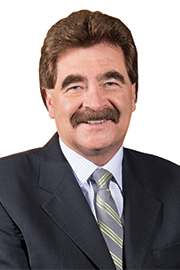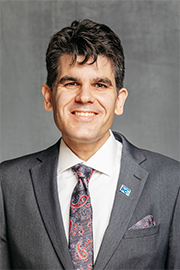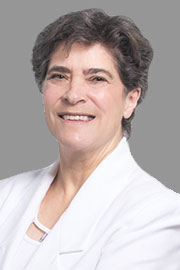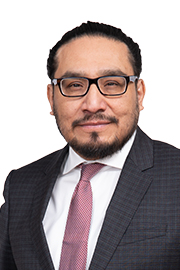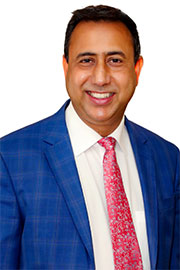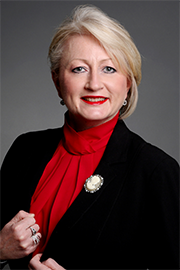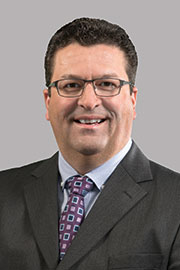- Oct/26/23 1:30:00 p.m.
- Re: Bill 139
I’m just trying to see—what have I got, 16 minutes left? Is that what that says?
Interjection: Six.
I just wanted to give the members an update from this morning about the St. Lawrence Seaway. I listened to the news at 12 o’clock, and if that dispute doesn’t get settled in the next two days there’s going to be a number of communities in the province of Ontario that have no gas. So do whatever you can do to talk to your leadership, to get a hold of the federal government as well to put some pressure to get that resolved. It’s really going to start to hit home in the next couple of days.
I want to start where I left off. I was talking about access to local health services, essential for the well-being of our communities. I’m going to turn my attention to Niagara-on-the-Lake. It’s concerning that there’s a lack of primary care services in my town. We know—or we should know, people who have been to Niagara-on-the-Lake—you closed the hospital there in Niagara-on-the-Lake, so we don’t have a hospital in Niagara-on-the-Lake anymore, unfortunately. I believe, as I said in my question this morning to the health minister, every resident deserves access to a family doctor or a nurse practitioner, yet many are left without this basic health care need. I am fully aware of the urgency of the situation and I have been actively advocating for a solution.
The arrival of a nurse practitioner in Niagara-on-the-Lake would be a positive step, not only for the residents but also for this government. Nurse practitioners play a critical role in our health care system, providing essential primary care services. They could bridge the gap and ensure that residents have access to timely and reliable health care. We cannot afford essential health care facilities like Fort Erie urgent care to close. We must work to prevent the privatization of our health care system.
Again, I’m going to talk just a little bit about Fort Erie: 25% of the residents in Fort Erie are seniors. You guys stand up and talk about how much you care about seniors. We have to do better for them. The residents of Niagara-on-the-Lake deserve access to primary care services, and the introduction of a nurse practitioner could be a great step moving forward. Unlike the government, I remain committed to advocating for the health care needs of our community and will continue to fight for better health care services for all—including in your ridings, by the way.
Madam Speaker, let’s take a look at the name of this bill. It includes two very common Conservative catchphrases: “cut red tape”—we’ve heard that before, many times, even in this House—but the one that they’ve added, which is why I’m arguing I can continue to speak on this, is “common sense.” I think everything I’m bringing forward today is common sense. We heard it for eight years under the Mike Harris government. What happened when they brought forward common sense was they closed hospitals, they laid off nurses—again, all in the name of cutting red tape. I’m trying to figure out why we go down this path of saying “common sense.”
The rationale is always about supporting businesses—“We need to cut red tape to allow business to thrive in this province.” However, they very rarely mean small or medium-sized businesses. Look how they are currently treating Ontario’s wine industry, a very, very important industry not only to Niagara but I believe right across the province of Ontario.
We have, without a doubt, some of the best small and medium-size wineries in the world. They are fighting to ensure this government listens to them and provides the necessary support for them to flourish. We have the potential to really grow that industry in Niagara. I know there’s been lots of proposals being talked about with the government, but if they want to cut red tape—and this is certainly one that can fall under “it’s not in the bill but it should be”—they could start with the 6.1% basic tax here on wineries here in Ontario.
Ontario’s wine industry has come a long way, and it now stands as one of the jewels in the crown of our province’s agricultural sector. This industry has seen remarkable growth, and the Niagara region has played a pivotal role in this success story. With its unique microclimate and fertile soil, Niagara has become the best of Ontario’s grape production. The region boasts some of the best wineries, numerous vineyards, and is home to an impressive number of wineries, making it a world-renowned wine-producing region.
This is really interesting; you should listen to this. Niagara has a very distinct climate. It’s responsible for a significant portion of grapes that are used in the production of high-quality Ontario wines. You may or may not know—the members who are listening—that 90% of the grapes are grown in Niagara—90%. It shows how valuable the grape industry is and the wine industry is to Niagara. These grapes give our wines that unique and delightful character, and I’m sure everybody in the House who has tried Niagara wines will say they taste great. The Niagara region is a beacon for wine enthusiasts and tourists from around the globe and it plays an essential role in promoting Ontario’s rich heritage.
Here’s how we can fix it and we can cut red tape: Promoting local wines through the LCBO is crucial for the success of our homegrown wineries. By enhancing the presence of local wines on LCBO shelves, we not only support our local winemakers; we also give the consumer more opportunity to experience the unique flavours our province has to offer.
What’s happening in Niagara—and I’m meeting with them tomorrow—is we have grapes that are going to sit on the vines and they’re probably just going to end up on the ground because we continue to allow, on some of our wines that aren’t VQA 100% Ontario wines, blended wineries. We end up importing grapes, importing wine into our communities. It makes no sense. So I’m really asking the government to really listen to the grape industry to make sure that our grapes are 100% grown in Ontario and are not going to rot on the vine. I don’t have the number, but I believe it’s something like $40 million. It’s something that I really want to—
- Hear!
- Rabble!
- Oct/26/23 1:30:00 p.m.
The petition is entitled “National Chronic Pain Society petition.”
“To the Legislative Assembly of Ontario:
“Whereas one in four Ontarians over the age of 15 suffer from chronic pain, with 73% reporting that the pain interferes with their daily lives and more than half reporting issues with depression and suicidal thoughts; and
“Whereas pain is the most common reason to seek health care, with chronic pain making up approximately 16% of emergency room visits and 38% of frequent visits, adding to the already lengthy wait times and delaying treatment; and
“Whereas the Ontario Health Insurance Plan (OHIP) is proposing to limit the number of nerve block injections a pain sufferer can receive to 16 per year, regardless of the severity of the patient’s condition or the number of injections needed, and seemingly without any consultations with patients or health care workers; and
“Whereas the most common treatment for pain provided by family doctors and hospitals is opioids, despite the current national crisis leading to an estimated 20 opioid-related deaths in Canada every day during the COVID-19 pandemic;
“We, the undersigned, petition the Legislative Assembly of Ontario as follows:
“Prevent OHIP from applying a one-size-fits-all solution to the issue of chronic pain, and allow for consultations with health care workers and pain sufferers to determine the best way to treat chronic pain without resorting to opioids.”
I will sign this petition and return it to the table with page Danté.
- Hear!
- Rabble!
- Oct/26/23 1:30:00 p.m.
Unfortunately, that’s all the time we have for petitions.
Resuming the debate adjourned on October 26, 2023, on the motion for second reading of the following bill:
Bill 139, An Act to amend various Acts / Projet de loi 139, Loi modifiant diverses lois.
- Hear!
- Rabble!
- Oct/26/23 1:30:00 p.m.
I’d like to thank Dr. Sally Palmer for her tireless efforts in bringing these petitions to the House. This is titled “to Raise Social Assistance Rates” and it reads:
“To the Legislative Assembly of Ontario:
“Whereas Ontario’s social assistance rates are well below Canada’s official Market Basket Measure poverty line and far from adequate to cover the rising costs of food and rent: $733 for individuals on OW and $1,227 for ODSP;
“Whereas an open letter to the Premier and two cabinet ministers, signed by over 230 organizations, recommends that social assistance rates be doubled for both Ontario Works (OW) and the Ontario Disability Support Program (ODSP);
“Whereas the recent small increase of 5% for ODSP still leaves these citizens below the poverty line, both they and those receiving the frozen OW rates are struggling to survive at this time of alarming inflation;
“Whereas the government of Canada recognized in its CERB program that a ‘basic income’ of $2,000 per month was the standard support required by individuals who lost their employment during the pandemic;
“We, the undersigned citizens of Ontario, petition the Legislative Assembly to double social assistance rates for OW and ODSP.”
I could not agree more and will affix my signature to it.
“To the Legislative Assembly of Ontario:
“Whereas mental health care is health care;
“Whereas the mental health crisis facing Ontarians has gotten worse with the pandemic;
“Whereas BIPOC, 2SLGBTQIA+ folks, women and people with disabilities have historically faced significant barriers to accessing equitable health care services due to systemic discrimination;
“Whereas registered psychotherapists provide vital mental health services, especially as an early intervention;
“Whereas a 13% tax added to the cost of receiving psychotherapy services is another barrier for Ontarians seeking this vital care;
“Whereas registered psychotherapists are still required to collect HST from clients, while most other mental health professionals have been exempted;
“Therefore we, the undersigned, petition the Legislative Assembly of Ontario to pass the Making Psychotherapy Services Tax-Free Act, 2023.”
I support this petition, will affix my signature to it and give it to page Paxten.
- Hear!
- Rabble!
- Oct/26/23 1:40:00 p.m.
I apologize to the member. Just on a point of order, standing order 59, I’ll outline business for next week.
In the morning we will have Bill 136, which is the Greenbelt Statute Law Amendment Act; in the afternoon, Bill 142, Better for Consumers, Better for Businesses Act.
On Tuesday, October 31, in the morning, Bill 142, Better for Consumers, Better for Businesses Act; in the afternoon, Bill 136, Greenbelt Statute Law Amendment Act; and in the evening, the private member’s business standing in the name of the member for Richmond Hill, Bill 137, Planning for Your Silver Years Awareness Week Act.
On Wednesday, November 1, in the morning, Bill 136, which is the Greenbelt Statute Law Amendment Act; in the afternoon, Bill 142, Better for Consumers, Better for Businesses Act; and in the evening, Bill 67.
On Thursday, November 2, in the morning, again back to Bill 142; in the afternoon routine, the Minister of Finance will deliver the fall economic statement; and in the afternoon, we will return to Bill 136.
- Hear!
- Rabble!
- Oct/26/23 1:40:00 p.m.
- Re: Bill 139
I want to thank the member from Niagara Falls for certainly his comments on the bill and just having the great familiarity with the Niagara region that you’ve got. I know I asked this question yesterday, but I’d love to hear from you too about the Niagara Escarpment Program and the permitting process involved. Given that it has been in place for such a long time, almost 50 years, it seems to be overburdened and outdated. It asks for newspaper ads instead of online tools. I’m wondering if you agree with the changes that are proposed in this bill that are recommended by the Auditor General that will modernize some of the notification measures that are related to the Niagara Escarpment Program.
- Hear!
- Rabble!
- Oct/26/23 1:40:00 p.m.
- Re: Bill 139
I would like to thank the member from Niagara Falls for completing his debate this afternoon, which I know he began probably yesterday.
- Hear!
- Rabble!
- Oct/26/23 1:40:00 p.m.
- Re: Bill 139
I’d like to thank the member from Niagara Falls for his presentation. We all know in this House that he’s a strong advocate for his constituents in Niagara Falls and, frankly, all of Niagara. He has also been a very strong voice on labour unions and health care.
Today, I was quite concerned to learn that in his riding, they had requested an RNP which the government promised a year ago, and the community has not seen that happen yet. I was wondering if the member could explain to me why this Conservative government is not delivering for the people of Niagara.
- Hear!
- Rabble!
- Oct/26/23 1:40:00 p.m.
- Re: Bill 139
This morning.
I can tell you, like we always find out during these things, we all know about—
What I would really want to make sure is that who gets appointed to the Niagara Escarpment board is not always just either defeated PC candidates or donors. I would like to see that citizens actually who aren’t in that ring—we get other people to sit on that board who may have some experience in Niagara Parks. I think that would be really good.
So to answer your question, anything that’s going to help the Niagara Escarpment I think is good. I think it’s good for the province of Ontario. I think it’s good for Niagara. Modernizing is always a good thing, so I appreciate the question.
The reason why I raised it today is I’m trying to say to the MPPs on that side of the House, when you make a promise to a community, my suggestion is you keep that promise. Because we are having residents from 60 to 90 who don’t have a family doctor, who have to drive to St. Catharines—or find some kind of transportation—or to Niagara Falls. So that’s why it’s important to raise those issues here in the House so my colleagues can hear some of the things—
- Hear!
- Rabble!
- Hear!
- Rabble!
- Oct/26/23 1:50:00 p.m.
- Re: Bill 139
Yes, I have a question. There are certain areas where there is an enormous amount of red tape. For example, ODSP: 800 regulations. But there are other areas where there needs to be enforcement where perhaps there isn’t enough regulation or inspection taking place. I wonder if you could speak to the situation in seniors’ housing and long-term care and actually the lack of necessary following of the rules and follow-up with inspections.
- Hear!
- Rabble!
- Oct/26/23 1:50:00 p.m.
- Re: Bill 139
Thank you to the member from Niagara Falls. I understand and hear that you advocate for the winery business in Niagara Falls. Our government always supports all the businesses and that’s why we have this less-red-tape bill. This is the second bill that we are proceeding on and we know that this is a process and we know what you are asking for is getting there, as well.
But my question for you is, we’ve now achieved over $939 million in savings a year and we’re going to continue moving forward with the important work, and part of that is what you’ve just asked for. Would the member support these continued efforts to make it easier for people and businesses to work with the government?
- Hear!
- Rabble!
- Oct/26/23 1:50:00 p.m.
I move that, in the opinion of this House, the government of Ontario should adopt the recommendations of the official opposition report on the Indigenous determinants of health so that Ontario recognizes “Indigeneity” and “colonialism” as overarching and intersectional determinants of health across government ministries.
Speaker, I spoke to the leadership of Muskrat Dam after I announced this motion, and they told me that they need to declare a mental health state of emergency. There is an ongoing public health emergency and social crisis related to mental health and addictions in the 33 First Nations served by the Sioux Lookout First Nations Health Authority, also known as SLFNHA.
On September 5 and 6, 2023, an annual general meeting for SLFNHA chiefs was held. The chiefs in the assembly heard staggering statistics from the preliminary mental health and addictions report. According to data analyses completed by the Institute for Clinical Evaluative Sciences, or ICES, mental health and substance abuse health care utilization rates for Sioux Lookout-area First Nations band members residing on-reserve in any First Nation community in Ontario and off-reserve in Ontario are as follows:
In 2021, Sioux Lookout-area First Nations band members visited the emergency department services for mental health and addictions at a rate 14 times the provincial rate.
In 2021, Sioux Lookout-area First Nations band members visited the emergency department for intentional self-harm or risks of suicide at a rate of 16 times the provincial rate.
In 2021, Sioux Lookout-area First Nations band members were hospitalized for mental health and addictions at a rate six times greater than the provincial rate.
According to data from the Office of the Chief Coroner for Ontario, unnatural death rates in the Sioux Lookout-area First Nations are as follows:
The rate of unnatural death in the Sioux Lookout-area First Nations was 1.6 in 2021, 3.4 times the provincial rate and 2.4 times the national rate.
The rate of death by asphyxia-related suicide in the Sioux Lookout-area First Nations members is 15 times greater than the Canadian rate.
Asphyxia by hanging is a primary cause of unnatural death in the Sioux Lookout-area First Nations. It is determined to be the cause of 38% of all unnatural deaths between 2011-21 and the cause of over 70% of unnatural deaths among children 10 to 19 years of age during the same time period.
I’m just sharing these stats to quantify, you know, the desperate situation that First Nations leadership has to deal with on a daily basis. This crisis is devastating. It takes an enormous toll on their already limited human and financial resources.
The mental health crisis and addictions crisis stems from systematic racism and intergenerational trauma, and the continuing colonial violence embedded in the current federal and provincial health care systems.
The position of the chief states that the Sioux Lookout-area First Nations “will no longer accept processes that are founded on a program-by-program basis, whereby the governments off-load their responsibility while maintaining power and control over our people and organizations” and that those processes must be replaced with a whole-system approach that brings authority back to the First Nations people.
In addition to requiring immediate resources to address the current crisis, the communities served by SLFNHA deserve an equitable and comprehensive public health system to respond to the mental health crisis and other health and public health emergencies. This will allow for control over solutions to ensure that they are delivered in a coordinated, holistic and culturally safe manner to address the social determinants of health and mental health.
We know the health system does not work for Indigenous people. Some people say it’s broken, but it’s not broken. It is working exactly the way it’s designed to, which is to take away the rights of the people through their lands and resources. It is working exactly the way it’s designed to, which is to harm our people.
What I have shared about the public health emergency and social crisis related to mental health and addictions among the Sioux Lookout-area First Nations cannot be denied. It cannot be argued with.
I want to thank some of the advocates working on the front lines of health who see the realities in their work. One of them is Caroline Lidstone-Jones, the chief executive officer of the Indigenous Primary Health Care Council. The IPHCC has dedicated significant time and resources towards engagements focused on development of the more truthful and accurate Indigenous social determinants of health, which include impacts of colonization, impacts of racism, as well as protectant factors such as traditional healing and connection to the land, water, culture and other determinants.
We must ensure that patient-centered services, grounded in equity, are accessible to patients across the province. This motion presents an important and critical step towards recognizing and addressing factors that impact the health and the well-being of Indigenous people in Ontario. If we fail to recognize these determinants, we will fail to address them and ultimately implement solutions that can improve health outcomes and save lives. This government has an opportunity to ensure that this does not happen.
The IPHCC and its network of Indigenous primary health care organization members have developed a provincial Indigenous integrated health hub to ensure that Indigenous peoples are directly involved in the planning, design, delivery and evaluation of health services for Indigenous peoples in Ontario. This work involves collectively advancing Indigenous-led health care solutions across its network of members. This hub also involves working across the broader health system, including the public health units, the mainstream providers to understand and implement more meaningful Indigenous social determinants of health and to introduce accountability measures into the system to ensure Indigenous peoples have equitable access to safe and appropriate health services across the province.
I know that we must look at other provinces such as BC and their First Nations Health Authority, as well as examples within our own backyard such as health system transformation efforts led by the provincial-territorial organizations, Sioux Lookout First Nations Health Authority and the work of Indigenous primary health care organizations, to understand that factors impacting the health and the well-being of First Nations, Inuit and Métis people go beyond the determinants that have been developed through a predominantly Western lens without our input.
Sometimes it’s very difficult to hear stories. We talk about long-term care; our people, our elders have to leave their First Nations, their communities. They’re gone for good, and the only time they come back is when they come back in a box. That’s how colonialism works. And it is my hope that this government—and I trust that this motion will be adopted for further discussion and deliberation, and ultimately implemented across government ministries in Ontario, because the biggest room in the world is the room for improvement. Meegwetch.
- Hear!
- Rabble!
- Oct/26/23 1:50:00 p.m.
- Re: Bill 139
Further questions?
Mr. Gill has moved second reading of Bill 139, An Act to amend various Acts. Is it the pleasure of the House the motion carry? In my opinion, the motion is carried.
Second reading agreed to.
Orders of the day? I recognize the deputy government House leader.
- Hear!
- Rabble!
- Oct/26/23 1:50:00 p.m.
- Re: Bill 139
I appreciate that because it gives me an opportunity again to talk about the wine industry, which is the small- and-medium-sized wineries. They are being hit with a 6.1% tax on the wine that they sell in their stores, which is an unfair tax. The reason why it’s unfair is because Australia, California and all those other wine producers don’t pay the tax, so it’s an unfair advantage. If you’re looking at cutting red tape, why would you not cut this 6.1% of an unfair tax to our wine industry so that we’d be able to use our grapes that are being grown by our grape growers and put that into our bottles of wine?
If you’re going to come into our market, I firmly believe that it should be a level playing field. I believe the Conservatives should feel that, so supporting getting rid of the 6.1% tax I think should be easy for your government, quite frankly. I’ve had people say to me, “I can’t believe that the NDP is actually trying to call for cutting taxes.” But I had that kind of thing when I talked to the farmers in Niagara-on-the-Lake.
I appreciate your question because it’s important. Again, to my colleagues who are here: Support local, support Ontario and support the wine industry because 18,000 jobs are tied to that wine industry—
- Hear!
- Rabble!
- Oct/26/23 1:50:00 p.m.
- Re: Bill 139
The bill which we are introducing is going to save money for the businesses in Ontario—$939 million in savings each year. My question to the member from the honeymoon capital of Canada is that this government is also proposing changes that will make horticultural organizations eligible for a grant to commemorate their 100th anniversary. Are you going to support this?
- Hear!
- Rabble!
- Oct/26/23 1:50:00 p.m.
- Re: Bill 139
Please assign to the Standing Committee on Justice Policy.
- Hear!
- Rabble!
- Oct/26/23 2:00:00 p.m.
Further debate?
- Hear!
- Rabble!
- Oct/26/23 2:10:00 p.m.
I am pleased to speak today on the private member’s motion 66. Since our government was elected in 2018 and throughout the COVID-19 pandemic, our government has shown an unwavering commitment to the health and well-being of the Indigenous people in Ontario. Our government’s goal is to improve the economic, social, health and well-being of First Nations across the province of Ontario. As the parliamentary assistant to the Minister of Health, I would like to emphasize that the ministry supports a wide range of Indigenous-led programs and services across Ontario which provide a high quality of care to First Nations, Inuit, Métis and urban Indigenous peoples, families and communities.
However, our government recognizes that health outcomes for Indigenous people are lower than those of other Ontarians. We acknowledge the pressing need to bridge existing disparities in health care outcomes, and we are dedicated to fostering a future where every individual, regardless of their cultural identity, receives equal access to high-quality health care.
The Ministry of Health continues to work with First Nations communities and the federal government through dedicated trilateral processes and relationship agreements to explore options to transform First Nations health. In 2022-23, the ministry approved over $2 million for five First Nations partners to support this initiative: Nishnawbe Aski Nation, Anishnabek Nation Union of Ontario Indians, Grand Council Treaty 3, Association of Iroquois and Allied Indians, and Six Nations of the Grand River. The ministry also partners with First Nations, Indigenous service partners and organizations across Ontario to engage their communities on important issues in the health care sector such as improving primary care, mental health and more. We have taken concrete steps to address these challenges, investing significant resources into Indigenous-led programs and services across the province.
Our government is working with Indigenous partners to improve Indigenous health outcomes through several key initiatives. We support Indigenous cultural safety training and Indigenous relationship and cultural awareness courses for the mainstream health care sector through the Indigenous Primary Health Care Council and Ontario Health, respectively. We are also working in partnership with Nishnawbe Aski Nation, Anishnabek Nation Union of Ontario Indians, Grand Council Treaty 3, Association of Iroquois and Allied Indians, Six Nations of the Grand River and the federal government to advance First Nations transformation and improve access to safe and effective health care services closer to where people live. Investments in Indigenous-led services are under way across all sectors, including primary care.
The ministry funds 21 Indigenous primary health care organizations across the province, with sites both on- and off-reserve that deliver a wide range of services. On June 20, I had the honour of joining my colleague the MPP for Cambridge for the opening of the SOAHAC, Southern Ontario Aboriginal Health Access Centre, in Cambridge, and we announced new base funding of more than $1.566 million to the SOAHAC for primary care access. During the tour, I had the honour of having a great conversation with an Indigenous nurse, and she spoke to me about how, as an Indigenous nurse, she approaches care for Indigenous patients. She’s also a teacher, to teach other nurses specifically Indigenous health care.
Also, the investments in Indigenous-led services include public health, seniors’ care, long-term care and mental health and wellness. Initiatives aimed at improving health outcomes for Indigenous communities have been infused with substantial financial support.
Firstly, our government is investing over $40 million in Indigenous-specific mental health and addictions programming through the Roadmap to Wellness initiative. This was a direct ask from Indigenous partners who see the need for these types of services to enhance the overall well-being of their communities.
Also, the Ontario government announced on October 10 that we are now offering more mental health services in every region of the province, through the expanded Ontario Structured Psychotherapy Program, the OSP. This program is to help adults across the province with mental health concerns connect to free cognitive behavioural therapy and other related services. The OSP Program and each regional network works with local Indigenous partners in all parts of Ontario to develop an approach to service delivery that best serves Indigenous communities. This program ensures that all Ontarians can now have more convenient access to mental health care closer to home. We know that this funding is essential to the development of culturally safe and Indigenous-led mental health and addiction services, both on- and off-reserve.
Additionally, we are allocating $90 million over three years, which started in 2021-22, through the Addictions Recovery Fund. These funds are being utilized for critical initiatives such as providing $4.2 million to the Sioux Lookout Friendship Accord group for addictions services and allocating over $3.8 million for new addiction treatment beds in Thunder Bay’s St. Joseph’s Care Group and Dilico Anishinabek Family Care. And we are investing in all corners of the province.
The government is also investing in the development of an Indigenous-led youth wellness hub, located in Sagamok Anishnawbek First Nation. This new youth wellness hub will provide culturally appropriate and safe supports to Indigenous youth between the ages of 12 and 24.
Furthermore, the emergency medical assistance team’s mental health response team maintains capacity to respond to mental health emergencies in First Nations and remote communities and continues to improve its self-sufficiency when deploying to remote communities—for example, for accommodations, meals, water etc.—to avoid utilizing resources from host communities. The emergency medical assistance team is staffed by paid volunteers who work in the professional health system.
The ministry continues to work with regional and local health partners to support First Nations who have declared social emergencies and who have requested provincial assistance. The ministry collaborates with Ontario Health, local health partners and the federal government to support communities.
In the realm of primary care, we are working closely with Indigenous partners to transform health care services. The ministry provides funding to the Indigenous Primary Health Care Council, the IPHCC, to develop strategies, tools and resources, including educational and training materials, to support Ontario health teams with meaningful Indigenous engagement, as well as encourage Indigenous providers and communities to participate in the Ontario health team process and the delivery of integrated care. Collaborative efforts have been supported by a substantial investment of over $2 million in 2022-23 for five First Nation partners.
Additionally, we are investing significantly in infrastructure and resources to address long-standing challenges. For instance, we have pledged $90 million for the construction and operational costs of the Mercury Care Home in Grassy Narrows First Nation. The ministry provides $1 million in annual funding to the Indigenous Primary Health Care Council for the delivery of an Indigenous cultural safety training program created specifically for individuals working in the health care sector. This facility will provide essential health services, programs and assisted daily living support, enabling community members to remain in their community for as long as possible.
In the critical area of safe drinking water, we are collaborating with First Nations communities and the federal government. While the Safe Drinking Water for First Nations Act has been repealed, we are actively working on a new draft proposal, focusing on the long-term sustainability of each community’s water infrastructure. The province is providing technical support and recommendations, reinforcing our government’s dedication to resolving long-term drinking water advisories.
To support these initiatives and investments, we have implemented robust legislative provisions, including the creation of Indigenous health councils. These councils are instrumental in advising the ministry about health and service delivery issues related to Indigenous people.
In conclusion, our government is taking action each and every day to create a future where Indigenous peoples in Ontario enjoy improved health outcomes and equitable access to health care. There is still much to be done, and we look forward to working with Indigenous and federal partners to improve health outcomes for Indigenous peoples in Ontario. Together with Indigenous leaders and partners, we are building a healthier, more equitable future for all.
- Hear!
- Rabble!
- Oct/26/23 2:20:00 p.m.
First of all, I want to commend my colleague from Kiiwetinoong on this acute, efficient and powerful motion. Speaker, there is no other answer to this motion than to support it loudly. There is no way to live in this day and age and not agree that Indigeneity and colonialism are overarching and intersectional determinants of health. Let me tell you how it translates in Mushkegowuk–James Bay.
Ce n’est pas pour rien que je répète très souvent au premier ministre et à son cabinet des ministres de mettre les pieds dans le Nord. Quand on parle du Nord, je vous défie de venir voir les communautés des Premières Nations du Traité 9 sur le bord de la baie James. Vous vous rendriez bien vite compte que de reconnaître le colonialisme et l’indigénéité se fait dans un coup d’oeil.
Speaker, let me give you a few examples of these two factors that can considerably change the quality of health care you receive. We all know about the world-infamous boil water advisories in 23 First Nations territories, with some dating back decades:
—Nibinamik First Nation has had water advisories since 2013: 10 years and still waiting;
—Gull Bay has had their water advisories since 2009: almost 15 years now;
—Sandy Lake First Nation has had their boil-water advisories since 2002: 20 years;
—Neskantaga First Nation has had their water advisories since 1995: 30 years.
It is clear: All the longest-standing water advisories in all of Ontario are on First Nations territories.
Mais je veux vous parler aussi de la dialyse. Quand on parle de la dialyse, nos commettants sont obligés de se déplacer de leurs communautés, soit dans Moose Factory—s’il n’y a pas de place à Moose Factory, ils sont obligés de se déplacer à Kingston. Ils vivent dans des motels pendant des mois. Des motels pendant des mois, c’est inacceptable. On se tanne, nous, dans une semaine ou quelques jours—on est tanné de rester dans des motels. Mais eux, ils sont obligés d’y rester pendant des mois.
We could talk about community isolation, lack of social services and non-recognition of traditional ways of life and cultural health care providers, trauma, industry development in communities that have polluted their environment, and so much more. And there is one thing I also want to talk about: dialysis. A machine costs $84,000. Think about it: $84,000 put in a community and they can stay with their loved ones. And that’s what’s not happening.
We all can think of at least one way to say, “Yes, colonialism is a determinant of health in this province.” I’m truly hoping that this government and all MPPs in this House will rise to support this motion that is in line with the World Health Organization and will finally put in the right tools to address a very important health crisis in Ontario.
- Hear!
- Rabble!


